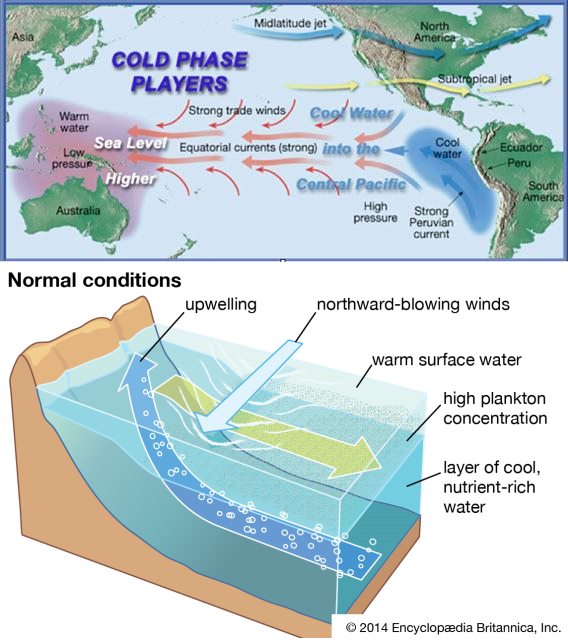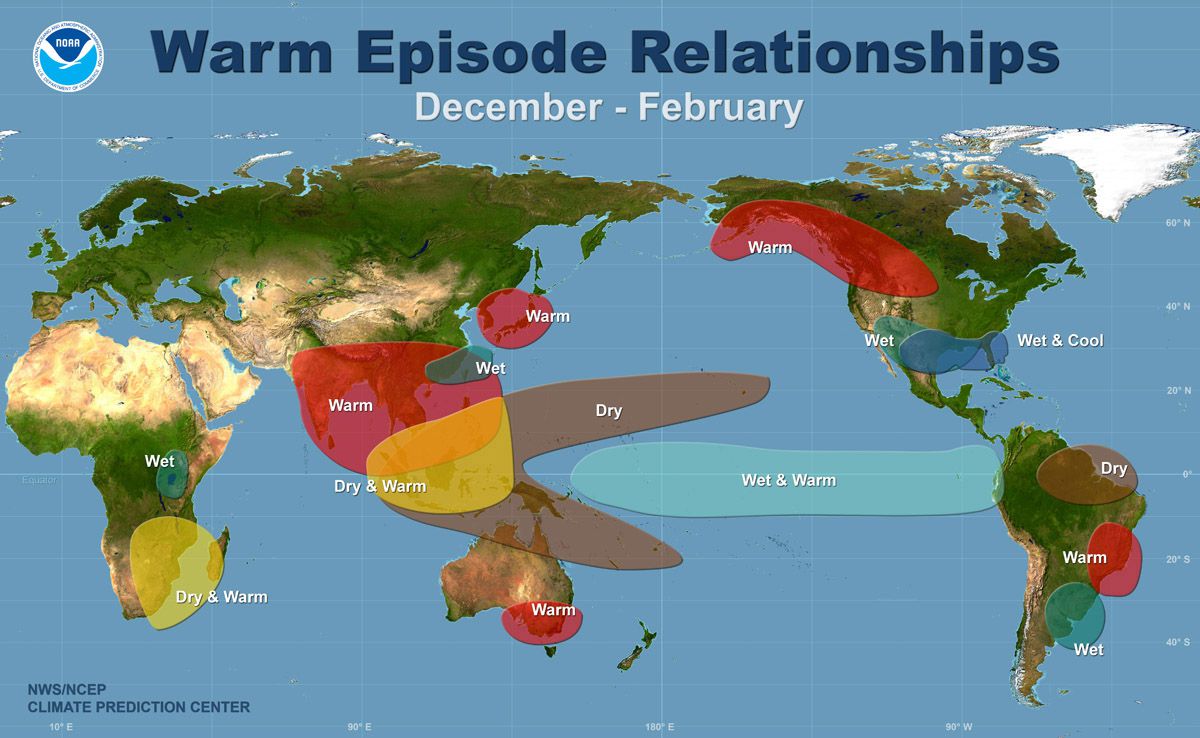EL NINO AND INDIAN SUB CONTINENTS
The two important meteorological events as far Indian sub continent is concerned are monsoons (southwest monsoon and northeast monsoon) and cyclones, which generally form during the pre-monsoon (March-May) and the post-monsoon season (October–December). And the two important phenomena which influence the Indian Ocean are the El Nino and Southern Oscillation (popularly known as ENSO) and the recently discovered Indian Ocean Dipole that refers to the difference in temperatures between the surface waters in the west and east of the ocean.
El Nino can further be classified into two types— traditional El Nino which is characterized by strong anomalous warming in the eastern equatorial Pacific and the El Nino Modoki that is associated with strong anomalous warming in the central tropical Pacific and cooling in the eastern and western tropical Pacific.
Monsoon in India will be governed by where and when this El Nino is formed and how strong or weak it would be. Here, I talk about three things that would be influenced by El Nino or El Modoki.
How it affects India?
Monsoon in India is often weaker during El Nino. But this is not always so. It is estimated that 60% of all droughts in India in the last 130 years have coincided with an El Nino. These have been years when rainfall was over 10% less than normal. However, not every El Nino has caused a drought or bad monsoon.
Monsoon in India is often weaker during El Nino. But this is not always so. It is estimated that 60% of all droughts in India in the last 130 years have coincided with an El Nino. These have been years when rainfall was over 10% less than normal. However, not every El Nino has caused a drought or bad monsoon.
The negative effect of the El Nino is negated by the Indian Ocean Dipole. This is when there is a positive difference in the sea temperatures of the western and eastern Indian Ocean.
Changes in the ENSO-Monsoon system
The monsoon influences environmental conditions in much of Asia, hence impacting most of the densely populated region of our planet. Differential heating of the north Indian Ocean and the north west Pacific Ocean and of the Indian landmasses, causes the seasonal reversal of monsoon wind. In summer this wind blows from the oceans to India, getting huge amounts of moisture over the neighboring land. This ensuing heavy rainfall can have devastating consequences for human lives and living beings. Conversely, agriculture in India and Asia depends on the monsoon rain, and the amount of nutrients in ocean surface waters is influenced by the monsoon and is essential to the success of fisheries. And El Nino widely affects the monsoon system.
The variable nature of Indian summer monsoon rainfall has a proven impact on India’s socio-economic growth. The Indian summer monsoon prevails over the Indian region for four months from June to September, in which it varies significantly temporally and spatially. In an agricultural country like India, the extreme departure from normal seasonal rainfall seriously affects the agricultural output and thus the economy of the country. It has been established that Indian summer monsoon is a fully coupled land-atmosphere-ocean system and that it is linked to ocean temperature variability. Past studies have revealed that the interannual variability of the Indian summer monsoon rainfall is linked to the El Nino-Southern Oscillation phenomena directly.
El Nino has become stronger and its pattern has been changing[3][4]. A 400 year long seasonal record of El Nino created by Australian scientists has revealed that a new type of El Nino has become more prevalent in the last three decades than at any time in the past four centuries in the central pacific, and traditional that El Nino events have become more intense and major. The trend of El Nino in the last four centuries shows a variation in El Nino type. There has been a simultaneous increase in Central Pacific events and a decrease in Eastern Pacific ones. Since the late 20th century, the most recent 30-year period includes fewer but more intense Eastern Pacific El Nino events. The trend shows that the stronger Eastern Pacific El Nino events like those that occurred in 1997 1998 and 2015-2016 have been growing in intensity.
Conclusion
In conclusion, the southern oscillation between complementary El Nino and La Nina states results from interactions between the tropical oceans and the atmosphere. The detailed properties of the oscillation depend on long-term average background conditions that change gradually with time. As those conditions change, with the monsoon being linked to El Nino-Southern Oscillation phenomena, summer temperatures over much of India may rise to as high as 45 degrees Celsius, while the Indian Ocean is much cooler. The warm air over the land rises with lower moisture bearing air blowing from the sea, though sometimes bringing heavy rain. This Indian monsoon model implies that El Nino years should be considered with different monsoon rainfalls, and El Nino-Southern Oscillation has a wide effect over the monsoon rains over Asia and India.









0 Comments